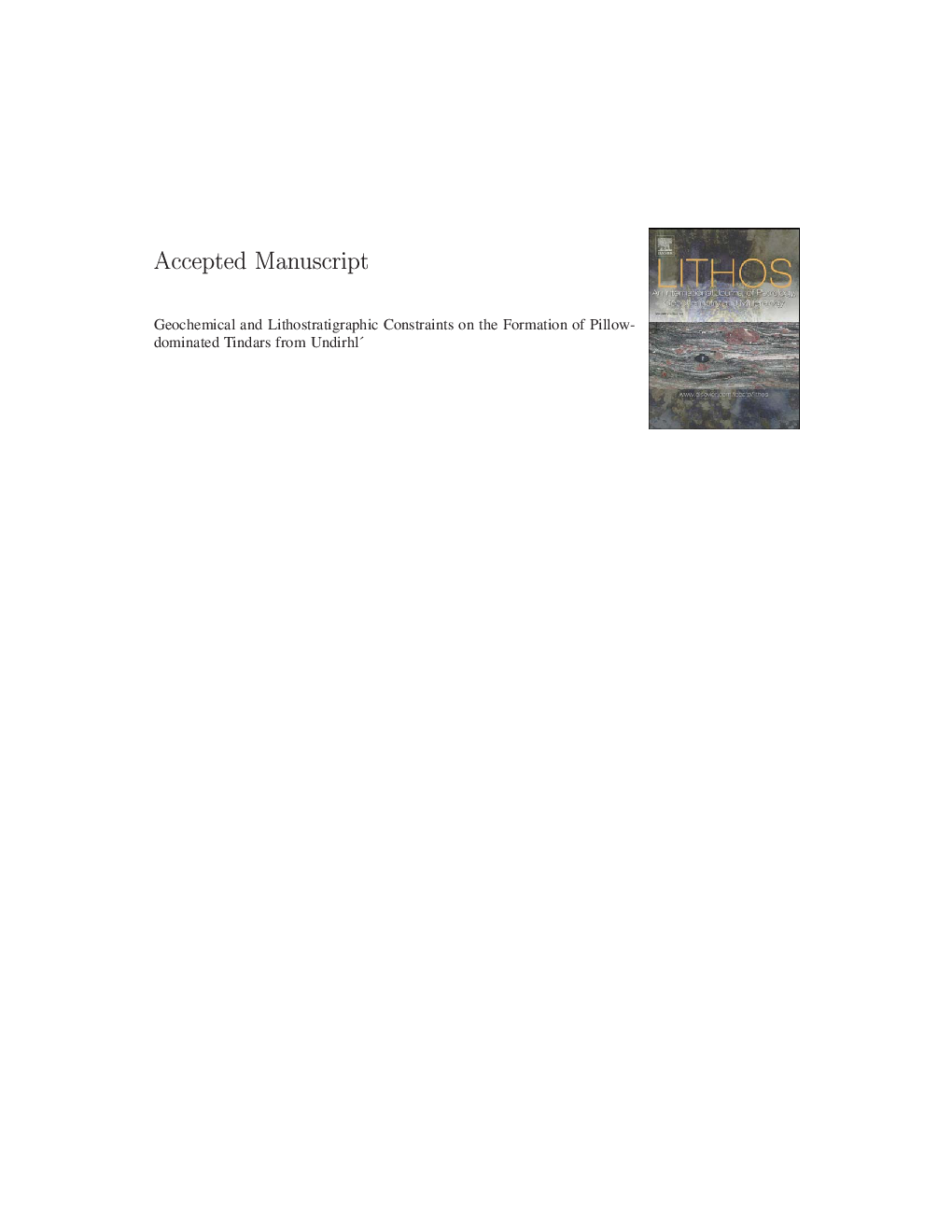| کد مقاله | کد نشریه | سال انتشار | مقاله انگلیسی | نسخه تمام متن |
|---|---|---|---|---|
| 6440811 | 1638676 | 2014 | 58 صفحه PDF | دانلود رایگان |
عنوان انگلیسی مقاله ISI
Geochemical and lithostratigraphic constraints on the formation of pillow-dominated tindars from UndirhlÃðar quarry, Reykjanes Peninsula, southwest Iceland
دانلود مقاله + سفارش ترجمه
دانلود مقاله ISI انگلیسی
رایگان برای ایرانیان
کلمات کلیدی
موضوعات مرتبط
مهندسی و علوم پایه
علوم زمین و سیارات
ژئوشیمی و پترولوژی
پیش نمایش صفحه اول مقاله

چکیده انگلیسی
UndirhlÃðar quarry on the Reykjanes Peninsula in southwest Iceland exposes an almost complete cross-section of a pillow-dominated tindar. Detailed mapping and geochemical analyses of the quarry walls show that glaciovolcanic lithologies are controlled not only by ice conditions, but also by complex changes in magmatic conditions. UndirhlÃðar's glaciovolcanic deposits are dominated by pillow lavas (Lp1-3) but also include dikes (Ld1-3) and shallow intrusions, and interbedded tuff (T), lapilli tuff (LT) and tuff-breccia (TB). Lithostratigraphic variations record shifts in eruptive vents and styles, including evidence for explosive subaqueous activity. Petrographically, the units can be subdivided into plagioclase-phyric and olivine-phyric, while compositionally the units define two trace element populations: (1) incompatible element-enriched (LaN/SmN ~ 1.6; Nb/Zr ~ 0.15) rocks comprising the lower (older) pillow units (Lp1-2), and (2) less-enriched (LaN/SmN ~ 1.3; Nb/Zr ~ 0.125) units including dikes (Ld1-3), west wall pillows (LpW), and the upper (younger) pillow units (Lp3). The combined lithostratigraphic, petrographic, and geochemical relationships suggest a four-stage model for the formation of UndirhlÃðar: (1) an initial effusive phase (Lp1-2) that built the bulk of the ridge, which erupted olivine-free, incompatible element-enriched lava, (2) an explosive phase, which generated lenses of TB and LT, now exposed on the eastern side of the ridge, (3) a second effusive phase (Ld1-2, LpW) exposed in the west side of the quarry, which intruded the initial effusive deposits and erupted pillow lavas that drape over the western edge of the existing ridge; this effusive phase is distinguished from the first as a less-enriched magma bearing large olivine phenocrysts, and (4) a final effusion on the east side of the quarry, which intruded (Ld3) units LT and TB, and erupted a capping layer of pillow lavas (Lp3). The products of this effusive event are genetically related to the previous effusive phase (LpW) but do not contain large olivine phenocrysts. The specific stratigraphic sequence of vitric fragmental units (TB2/LT) cut by dikes (Ld3) that feed pillow lava flows (Lp3) emplaced immediately above the fragmental units (TDP lithofacies association) is consistent with an explosive initiation to the final phase of volcanism evident in the quarry. The explosive unit (TB2/LT) also coincides with the transition from olivine-free, incompatible element-enriched lavas to olivine-phyric, less-enriched lavas. To explain the shift in trace elements between the early and late pillow lavas, we propose a model based on tapping of separate, small magma reservoirs at different depths.
ناشر
Database: Elsevier - ScienceDirect (ساینس دایرکت)
Journal: Lithos - Volumes 200â201, July 2014, Pages 317-333
Journal: Lithos - Volumes 200â201, July 2014, Pages 317-333
نویسندگان
Meagen Pollock, Benjamin Edwards, Steinunn Hauksdóttir, Rebecca Alcorn, Lindsey Bowman,